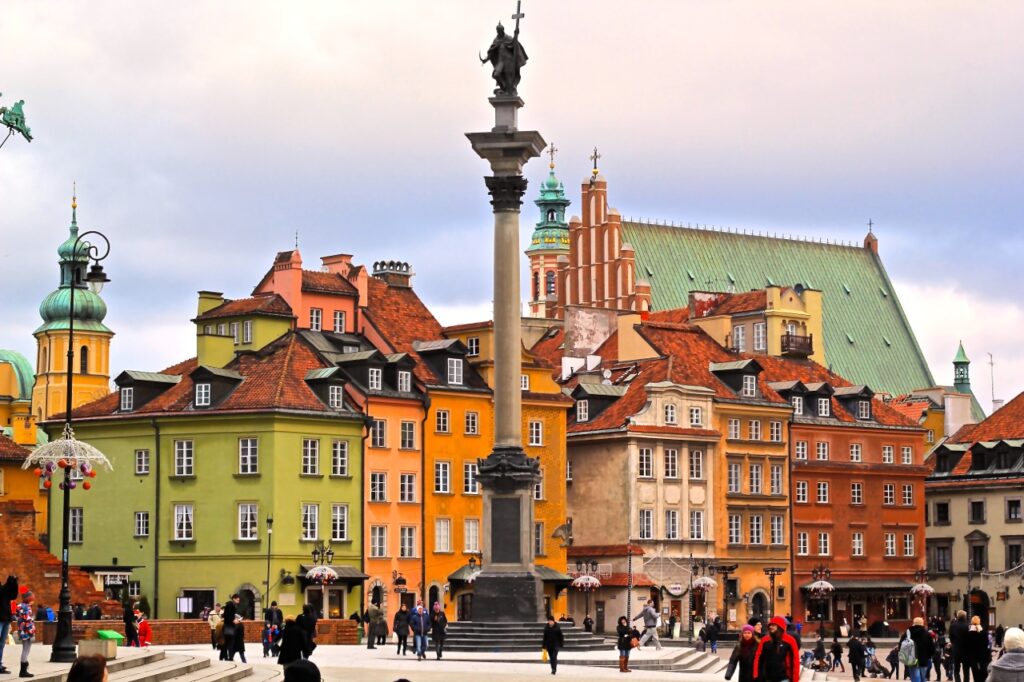Warsaw, Poland: A Tapestry of Resilience, Heritage, and Modernity

Introduction:
Warsaw, the capital and largest city of Poland, stands as a testament to the indomitable spirit of a nation that has weathered the storms of history. This comprehensive article delves into the multifaceted layers of Warsaw, unraveling its rich cultural heritage, architectural wonders, vibrant arts scene, and the dynamic blend of tradition and modernity that defines this thriving European metropolis.
Section 1: Historical Resilience
1.1 Warsaw Uprising Museum: Immerse yourself in the poignant history of Warsaw at the Warsaw Uprising Museum. Explore exhibits, artifacts, and interactive displays that chronicle the city’s heroic resistance during World War II, honoring the resilience of its inhabitants. 1.2 Royal Castle: Visit the Royal Castle, a symbol of Poland’s monarchic history and a UNESCO World Heritage site. Learn about the castle’s reconstruction after wartime destruction, symbolizing the city’s determination to preserve its cultural legacy.
Section 2: Architectural Marvels
2.1 Old Town Market Square: Stroll through the picturesque Old Town Market Square, the heart of Warsaw’s historic district. Admire the colorful facades, Renaissance-style architecture, and the iconic Warsaw Mermaid statue that graces the square. 2.2 Palace of Culture and Science: Marvel at the imposing Palace of Culture and Science, a Soviet-era skyscraper that dominates the city skyline. Explore its multifunctional spaces, including theaters, museums, and an observation deck offering panoramic views of Warsaw.
Section 3: Cultural Renaissance
3.1 Lazienki Park: Wander through Lazienki Park, a sprawling green oasis that houses the Palace on the Isle and the iconic Chopin Monument. Experience open-air concerts and cultural events that celebrate Poland’s artistic heritage. 3.2 Copernicus Science Centre: Engage with the wonders of science at the Copernicus Science Centre. Explore interactive exhibits, experiments, and planetarium shows that captivate visitors of all ages, fostering a love for learning and discovery.
Section 4: Arts and Entertainment
4.1 Zacheta National Gallery of Art: Immerse yourself in the contemporary art scene at the Zacheta National Gallery of Art. Discover a diverse collection of Polish and international contemporary art, exhibitions, and cultural events that shape Warsaw’s artistic landscape. 4.2 Warsaw Philharmonic Orchestra: Experience the grandeur of classical music at the Warsaw Philharmonic Orchestra. Attend concerts at the historic Philharmonic Hall, where renowned musicians and orchestras grace the stage, contributing to Warsaw’s reputation as a cultural hub.
Section 5: Modern Urban Development
5.1 Wilanow District: Explore the modern developments in the Wilanow district, home to the Wilanow Palace and a burgeoning residential and commercial area. Witness the harmonious coexistence of contemporary architecture with historical landmarks. 5.2 Vistula Boulevards: Enjoy the vibrant atmosphere along the Vistula Boulevards, a recreational area along the Vistula River. Engage in outdoor activities, visit riverside cafes, and witness the transformation of Warsaw’s waterfront into a modern and lively space.
Section 6: Culinary Scene
6.1 Old Town Restaurants: Indulge in Warsaw’s culinary delights in the charming restaurants of the Old Town. Sample traditional Polish dishes, savor pierogi, and experience the fusion of modern gastronomy with age-old recipes. 6.2 Hala Koszyki: Explore Hala Koszyki, a historic market hall transformed into a gastronomic haven. Delight in diverse culinary offerings, international cuisines, and a vibrant ambiance that reflects Warsaw’s evolving food culture.
Section 7: Commemoration and Remembrance
7.1 POLIN Museum of the History of Polish Jews: Visit the POLIN Museum, a landmark institution dedicated to preserving and recounting the history of Polish Jews. Engage with exhibits, educational programs, and events that contribute to the narrative of tolerance, understanding, and remembrance. 7.2 Pawiak Prison Museum: Gain insights into wartime history at the Pawiak Prison Museum. Explore the preserved prison fragments and exhibitions that commemorate the lives and struggles of those who faced persecution during World War II.
Conclusion:
Warsaw, Poland, unfolds as a city that wears its history with pride, embraces modernity with enthusiasm, and pulsates with a vibrant cultural heartbeat. From the resilience showcased at the Warsaw Uprising Museum to the architectural splendor of the Royal Castle, from the artistic vibrancy of Lazienki Park to the modern developments in Wilanow, Warsaw invites visitors on a journey that transcends time and encapsulates the spirit of a nation. As a city that has risen from the ashes of war to become a thriving European capital, Warsaw stands as a testament to Poland’s enduring cultural legacy, its commitment to remembrance, and its dynamic evolution into a modern metropolis. In Warsaw, the past intertwines with the present, creating a tapestry of resilience, heritage, and modernity that captivates all who explore its vibrant streets and cultural wonders.




